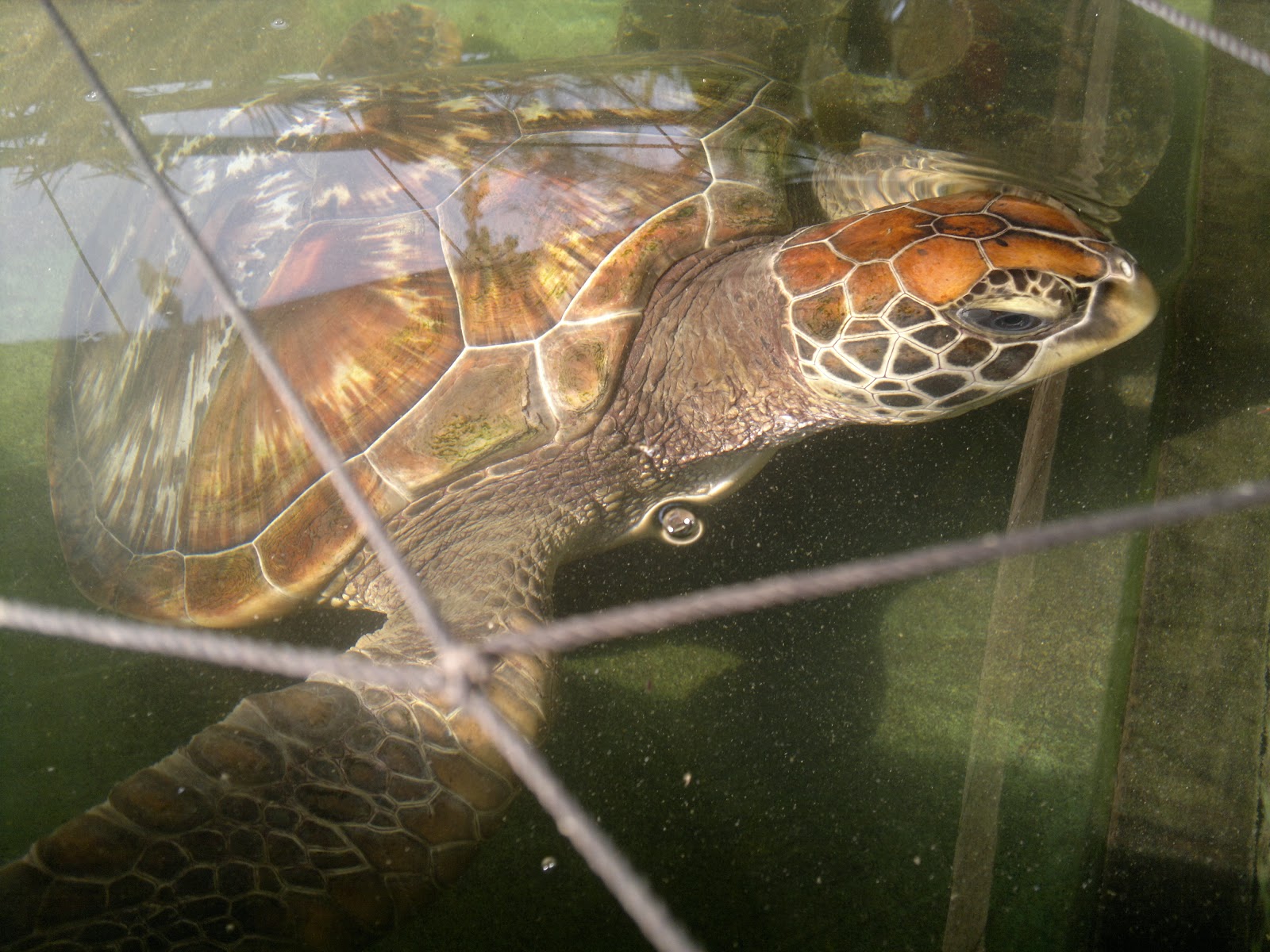As part of our company's Corporate Social Responsibility (CSR), last Friday we went to a Sea Turtle Conservation in Bataan, Philippines. Most commonly known as the Pawikan Conservation Center, the place has been promoting the conservation and protection of sea turtles for more than 10 years. The people taking care of the place are local folks who voluntarily devote their time to protect the sea turtles. They do not get any funding from the government and rely mainly on the donations given to them. The conservation center accommodates overnight stay for guest especially those who would like to search for sea turtles at night. A minimal fee of P150.00 is collected for the overnight stay accommodation inclusive of dinner and breakfast. However, all of these are put on the center and the locals are not paid for their job.
The visit to the place includes four activities. First is the beach clean-up, second is the releasing of sea turtles to the sea, third is mangrove planting and the last activity which is the most exciting is searching for sea turtles at night. Since we came in early December,if we are lucky enough, we might be able to witness a sea turtle lay her eggs on the beach. This is what we are supposed to search for the night. Once the sea turtle lay her eggs, the people at the conservation will take the eggs and put them on their hatchery to ensure that the eggs will be protected.
A turtle shaped pond is situated near the entrance of the resort. At the back of it is their hatchery and a wonderful illustration on the life cycle of the sea turtles. At the right side of the center are the dining area and the guest rooms and shower rooms.
On our first activity we were divided into ten groups with three members each. We have trash bags ready for the garbage we will collect. At first we thought that the only trash we will get are cigarette butts but as we go farther on the beach we found different stuff. We were able to get a shoe, slipper, plastic wrapper of candies, foams and even diapers. After thirty minutes, all ten groups were able to fill-up their trash bags.
The releasing of turtles was just a short activity. The guy at the center explained to us that when releasing a turtle to the sea it imprints itself on the place and that they will come back after 25 years to lay their eggs.
Our next activity was the mangrove planting. The people at the center gave us mangrove shoots to for planting. We went to a nearby area where there are lots of mangroves. We just have to place the mangrove shoots on the holes that they have created. They advised us that it will be much easier for us to plant the mangroves on a damp area. They remind us also to ensure that we are able to firmly planted the mangroves on the hole.
After the three activities, the people at the center gave us a brief history of the place. They also explained to us the next activity, which is the searching for sea turtles. They usually search 12 kilometers of the beach for sea turtles. They were able to see sea turtle lay their eggs the past two nights. At the average, a mother turtle can lay a hundred eggs however only one percent have a chance of survival on the wild. The search of the sea turtle will begin at 9PM and will end at 1AM. There are instances that there were no sea turtles but we're hoping to see one since this is the season for them to lay their eggs.
The search for the sea turtles is a very tiring activity. It was very hard to walk on the sand. After 3 kilometers there were still no sign of sea turtles. The guide let us rest for awhile before going back and check the other direction. The night sky was very beautiful. There stars are very visible unlike when you are living in the city. After 20 minutes of rest we head back to continue our search. Our exhaustion was relieved when we were signaled that a sea turtle just came out of the sea and is ready to lay her eggs. We were just in time to witness this wonderful event.












No comments:
Post a Comment